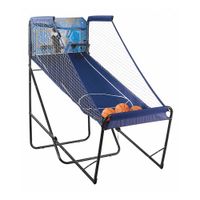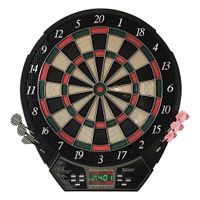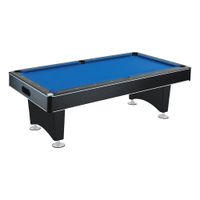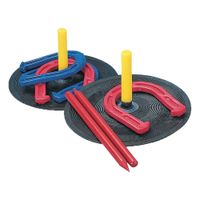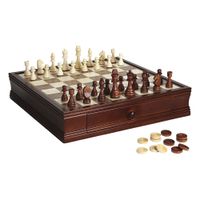Call +(254) 703 030 000 / 751 483 999 / 721 704 777
- Home
- Furnishings Appliances Hospitality
- Fitness Sports Recreation
- Recreational Games
Frequently Asked Questions
What are the best recreational games for all ages?
The best recreational games for all ages are those that are inclusive, easy to understand, and adaptable to different skill levels. Here are some top choices:
1. **Board Games**: Classics like "Monopoly," "Scrabble," and "The Game of Life" are timeless and can be enjoyed by both children and adults. Newer games like "Catan" and "Ticket to Ride" offer strategic fun for all.
2. **Card Games**: Games such as "Uno," "Go Fish," and "Crazy Eights" are simple yet entertaining. For more strategy, "Poker" and "Rummy" can engage older players.
3. **Outdoor Games**: "Frisbee," "Tag," and "Hide and Seek" are perfect for physical activity and can be played in various settings. "Capture the Flag" and "Kickball" are great for larger groups.
4. **Puzzle Games**: Jigsaw puzzles and brain teasers like "Sudoku" or "Crossword Puzzles" are excellent for mental stimulation and can be enjoyed solo or collaboratively.
5. **Video Games**: Family-friendly games like "Mario Kart," "Minecraft," and "Just Dance" offer interactive fun and can be played on various gaming consoles.
6. **Party Games**: "Charades," "Pictionary," and "Trivia" games are ideal for gatherings and encourage creativity and teamwork.
7. **Sports**: Non-competitive sports like "Bowling," "Mini Golf," and "Bocce Ball" are accessible to all ages and skill levels.
8. **Cooperative Games**: Games like "Pandemic" and "Forbidden Island" require players to work together, fostering teamwork and communication.
These games provide entertainment, promote social interaction, and can be adapted to suit different preferences and abilities, making them ideal for all age groups.
How do game tables enhance indoor fun?
Game tables enhance indoor fun by providing a versatile and engaging form of entertainment that caters to a wide range of interests and age groups. They serve as a focal point for social interaction, encouraging family members and friends to gather, compete, and collaborate in a shared activity. This social aspect fosters communication, teamwork, and friendly competition, which can strengthen relationships and create lasting memories.
Game tables, such as pool tables, foosball, air hockey, and table tennis, offer a physical component to indoor entertainment, promoting physical activity and improving hand-eye coordination, reflexes, and strategic thinking. These games require players to be actively involved, providing a break from passive activities like watching TV or playing video games.
Moreover, game tables are versatile and can be used in various settings, from family game nights to parties and casual gatherings. They can be a centerpiece in a game room or a multifunctional space, adding aesthetic value and a sense of fun to the home environment. The variety of games available ensures that there is something for everyone, catering to different skill levels and preferences.
Game tables also offer a sense of nostalgia, often reminding adults of their own childhood experiences, which can be shared with younger generations. This intergenerational appeal makes them a timeless addition to any home, bridging age gaps and creating a shared space for enjoyment.
In summary, game tables enhance indoor fun by promoting social interaction, physical activity, and strategic thinking, while also adding aesthetic and nostalgic value to the home. They provide a dynamic and inclusive form of entertainment that can be enjoyed by people of all ages, making them a valuable addition to any indoor space.
What are the most popular lawn games for outdoor gatherings?
Some of the most popular lawn games for outdoor gatherings include:
1. **Cornhole**: A staple at many outdoor events, players take turns throwing bean bags at a raised platform with a hole at the far end. Points are scored by landing bags on the board or in the hole.
2. **Bocce Ball**: This Italian game involves tossing larger balls to get them as close as possible to a smaller target ball, known as the pallino. It’s easy to set up and can be played on various surfaces.
3. **Horseshoes**: Players take turns throwing horseshoes at stakes in the ground, aiming to encircle the stake or land closest to it. It’s a classic game that requires skill and precision.
4. **Ladder Toss**: Also known as ladder golf, this game involves throwing bolas (two balls connected by a string) onto a ladder structure. Points are scored based on which rung the bolas land on.
5. **Giant Jenga**: An oversized version of the classic stacking game, players take turns removing blocks from a tower and placing them on top, trying to avoid causing a collapse.
6. **Frisbee Golf**: Combining elements of frisbee and golf, players aim to throw a frisbee into a series of baskets or targets in as few throws as possible.
7. **Spikeball**: A fast-paced game played with a small trampoline-like net placed at ankle level. Teams of two hit a small ball onto the net, aiming to make it difficult for the opposing team to return.
8. **Croquet**: Players use mallets to hit balls through a series of hoops embedded in the grass, aiming to complete the course in the fewest strokes.
9. **KanJam**: A disc-throwing game where players aim to hit or slot a frisbee into a can-like goal, with points awarded for different types of hits.
These games are popular for their simplicity, accessibility, and ability to engage players of all ages.
How do you choose the right dartboard for your home?
Choosing the right dartboard for your home involves considering several factors to ensure you get the best experience. First, decide between a traditional bristle dartboard and an electronic dartboard. Bristle dartboards, made from sisal fibers, are ideal for serious players and offer a classic feel. They self-heal, meaning the holes close up after the darts are removed, prolonging their lifespan. Electronic dartboards, on the other hand, are great for casual play and often come with built-in games and automatic scoring.
Next, consider the size and space available. Standard dartboards are 18 inches in diameter, but ensure you have enough room for the throwing distance, which is typically 7 feet 9.25 inches from the board. Also, check the wall space for mounting and consider a dartboard cabinet to protect your walls and store darts.
Quality is crucial. For bristle boards, look for tightly packed, high-quality sisal fibers and a staple-free bullseye to reduce bounce-outs. For electronic boards, ensure the segments are durable and the display is clear.
Budget is another factor. Bristle boards are generally more affordable, but high-end models can be pricey. Electronic boards vary widely in price based on features like LED displays, sound effects, and game variety.
Finally, consider who will be using the dartboard. If it's for family use, an electronic board with safety darts might be best. For serious players, a professional-grade bristle board is ideal.
In summary, choose based on type, size, quality, budget, and user needs to find the perfect dartboard for your home.
What are some classic parlor and board games for family game night?
Some classic parlor and board games perfect for family game night include:
1. **Monopoly**: A real estate trading game where players buy, sell, and trade properties to bankrupt opponents.
2. **Scrabble**: A word game where players use letter tiles to create words on a board, earning points based on letter values and board placement.
3. **Clue (Cluedo)**: A mystery game where players deduce the murderer, weapon, and location of a crime by collecting clues.
4. **Chess**: A strategic two-player game involving the movement of pieces on a checkered board with the objective of checkmating the opponent's king.
5. **Checkers**: A simpler strategy game where players aim to capture all opponent pieces by jumping over them.
6. **Risk**: A strategy board game of diplomacy, conflict, and conquest, where players aim to dominate the world map.
7. **The Game of Life**: A simulation game where players navigate through life events, from college to retirement, aiming for financial success.
8. **Sorry!**: A board game where players move pieces around the board with the goal of getting all their pieces to the home space.
9. **Pictionary**: A drawing and guessing game where players draw clues for their teammates to guess the word or phrase.
10. **Charades**: A classic parlor game where players act out words or phrases without speaking, while others guess.
11. **Trivial Pursuit**: A trivia game where players answer questions from various categories to earn wedges and complete their game piece.
12. **Backgammon**: A two-player game combining strategy and luck, where players move pieces around the board based on dice rolls.
13. **Yahtzee**: A dice game where players roll five dice to make specific combinations, aiming for the highest score.
14. **Connect Four**: A two-player connection game where players drop colored discs into a grid, aiming to connect four in a row.
15. **Battleship**: A guessing game where players try to sink each other's fleet of ships by calling out grid coordinates.
How do arcade and bowling games differ from traditional versions?
Arcade and bowling games differ from their traditional versions in several key aspects, including setting, gameplay, technology, and social experience.
1. **Setting**: Traditional arcade games are typically found in dedicated gaming centers or amusement parks, while traditional bowling is played in bowling alleys. Arcade versions of these games can be found in various locations, including malls, restaurants, and entertainment complexes, often alongside other attractions.
2. **Gameplay**: Arcade games often feature simplified or modified gameplay to accommodate shorter play sessions and attract casual players. For example, arcade bowling games might use a smaller ball or a virtual interface, while traditional bowling involves a full-sized lane and regulation equipment. Arcade games may also include additional challenges or power-ups not present in traditional versions.
3. **Technology**: Arcade games frequently incorporate advanced technology, such as digital screens, motion sensors, and interactive elements, to enhance the gaming experience. Traditional games rely on physical components and manual scoring. Arcade versions may offer digital scoring, animated graphics, and immersive sound effects, creating a more dynamic environment.
4. **Social Experience**: Traditional games often emphasize social interaction and competition among players. Bowling leagues and tournaments are common in traditional settings. Arcade games, while also social, tend to focus on individual achievements and high scores. They may include multiplayer options but are generally designed for quick, casual play.
5. **Accessibility**: Arcade versions are typically more accessible to a broader audience, including those who may not have the time or skill for traditional games. They offer a more casual experience, appealing to both seasoned players and newcomers.
In summary, arcade and bowling games differ from traditional versions in their environment, gameplay mechanics, technological integration, social dynamics, and accessibility, catering to a diverse range of players and preferences.
What equipment is needed for setting up a recreational game area at home?
To set up a recreational game area at home, consider the following equipment:
1. **Seating and Tables**: Comfortable seating like bean bags, gaming chairs, or sofas, and sturdy tables for board games or card games.
2. **Gaming Console and Accessories**: A gaming console (e.g., PlayStation, Xbox, or Nintendo Switch) with controllers, charging stations, and a selection of games.
3. **Television or Monitor**: A large, high-definition TV or monitor for an immersive gaming experience.
4. **Sound System**: Quality speakers or a soundbar for enhanced audio, or gaming headsets for personal use.
5. **Board Games and Card Games**: A variety of board games and card games to cater to different interests and group sizes.
6. **PC Gaming Setup**: A gaming PC with a high-performance graphics card, gaming keyboard, mouse, and a comfortable desk and chair.
7. **Virtual Reality Equipment**: VR headsets and compatible games for a more immersive experience.
8. **Lighting**: Adjustable lighting, such as LED strips or smart bulbs, to create the right ambiance.
9. **Storage Solutions**: Shelving or cabinets to organize games, controllers, and accessories.
10. **Table Tennis or Pool Table**: If space allows, a table tennis or pool table for physical games.
11. **Dartboard**: A dartboard with darts for a classic game option.
12. **Foosball Table**: A foosball table for competitive play.
13. **Decor and Theming**: Posters, themed decor, or memorabilia to personalize the space.
14. **Snacks and Refreshments Area**: A mini-fridge or snack bar for convenience.
15. **Internet Connection**: A strong Wi-Fi connection for online gaming and streaming.
These elements can be tailored to fit the available space and personal preferences, ensuring a versatile and enjoyable recreational game area.
